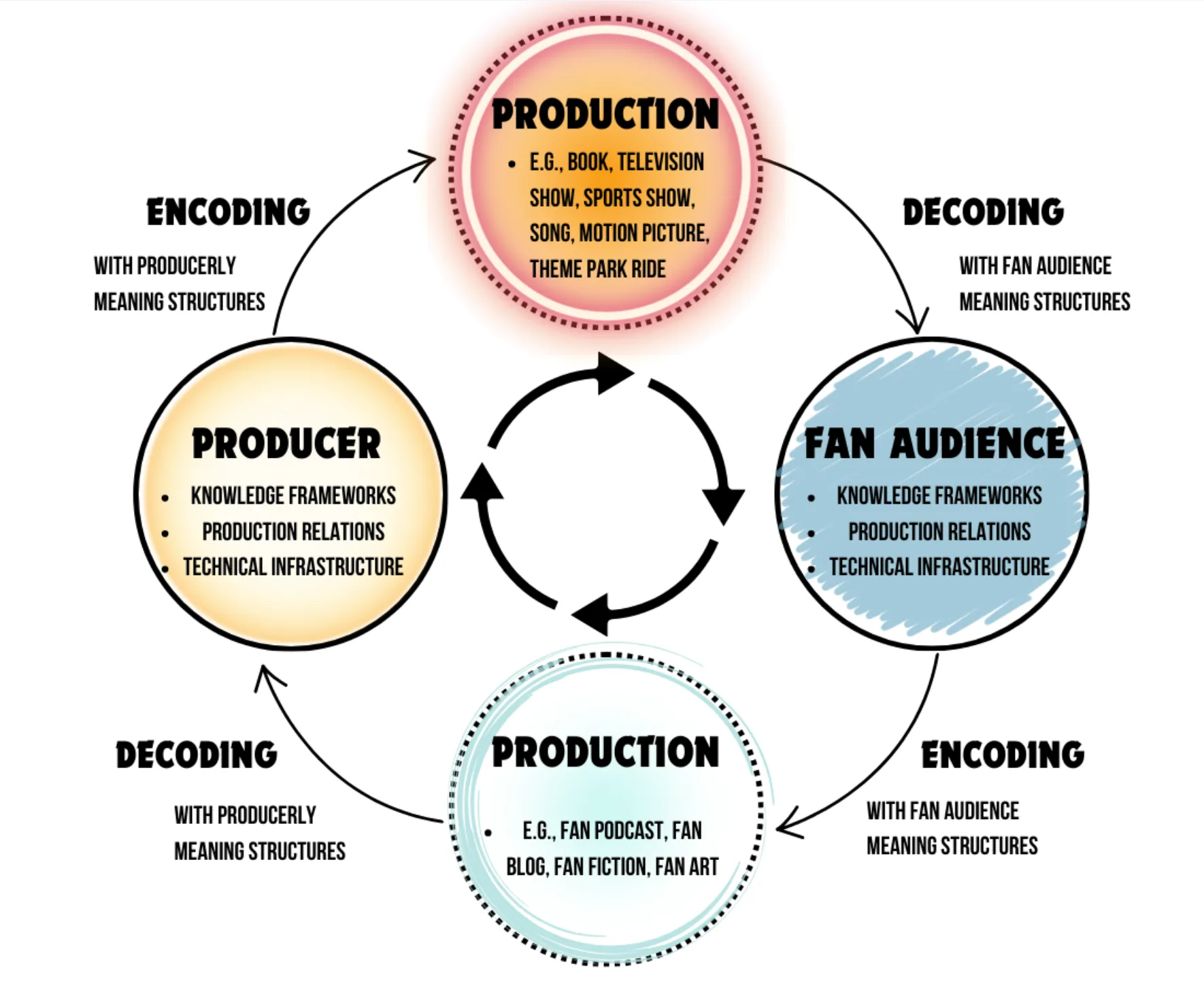The Unstoppable Force: Tracing the Evolution of Fandoms from Subculture to Mainstream Powerhouse
Explore the fascinating journey of fandoms from niche subcultures to mainstream powerhouses.

Written by Lavanya, Intern, Allegedly The News
WASHINGTON, D.C., September 9, 2025
Fandoms, once relegated to the fringes of society, have transformed into a formidable cultural and economic force. From the quiet, text-based communities of early internet forums to the hyper-connected, meme-driven movements of modern social media, the way fans interact with and influence entertainment has changed dramatically.
A Brief History of Fan Labor: From Zines to Forums
The concept of "fandom" isn't a modern invention. Its roots can be traced back to the early 20th century, where dedicated readers of authors like Arthur Conan Doyle and Jane Austen formed societies to discuss, analyze, and even create their own stories. These communities, often centered around printed fan magazines known as "fanzines," were the first iteration of fan culture. They were slow, deliberate, and required a significant amount of effort to produce and distribute.
The first major shift occurred with the advent of the Internet. In the 1990s, fan communities found a new home on platforms like Usenet and LiveJournal. These online forums and blogging sites created a dynamic, real-time space for fans to connect globally. This was the golden age of fan fiction and fan art, where enthusiasts could share their creations with a like-minded audience without the geographical constraints of the past. Sites like FanFiction.net, launched in 1998, became vast archives for derivative works, allowing fans to build upon existing universes. This marked a crucial turning point, as fans transitioned from passive consumers to active producers, a phenomenon sociologist Henry Jenkins famously termed "participatory culture." This was the quiet, foundational period where the seeds of today's digital fandom were sown.
The Social Media Revolution: The Rise of Stan Culture and Digital Activism
The early to mid-2000s ushered in the social media revolution, and with it, the rapid acceleration of fandom. Platforms like Twitter, Tumblr, and Facebook provided fans with a new, immediate, and public arena to express their devotion. This is where the term "stan"- derived from Eminem's 2000 song about an obsessive fan- came into its own, morphing from a term with negative connotations to a badge of honor for dedicated superfans.
This era saw the birth of organized, powerful fan movements. K-pop fandoms, in particular, became a master class in coordinated digital action. Fans learned to weaponize social media algorithms, launch synchronized streaming parties, and trend hashtags to promote their idols. This collective power extended beyond entertainment. In 2020, K-pop fans famously organized to disrupt a political rally, flooding a registration website with fake sign-ups. This event demonstrated that fandoms were no longer just about enjoying media; they were a political and social force.
The influence is two-fold: it's a powerful marketing engine for studios and a direct line of communication for fans. Studios now actively court fan communities, hosting Q&As with actors, releasing behind-the-scenes content, and even incorporating fan theories into official narratives. The 2021 release of Zack Snyder's Justice League, a direct result of the #ReleaseTheSnyderCut fan campaign, stands as a testament to the immense power of collective fan demand.

The Dark Side of Devotion: The Problem of Toxic Fandoms
As fandoms have grown in power and visibility, so has their darker side. The same platforms that enable community and creation also facilitate harassment and bullying. Toxic fandoms often form a mob-like mentality, attacking anyone who critiques their beloved franchise or celebrity.
Case in point: the harassment of Kelly Marie Tran, an actress from the Star Wars sequel trilogy. After receiving a barrage of racist and sexist comments from a vocal minority of fans, she was forced to leave social media. This incident, among many others, highlighted a troubling aspect of modern fan culture. Fans feel a sense of ownership over a piece of media, leading them to believe they have the right to dictate its creative direction and cast. When their expectations are not met, the backlash can be severe and disproportionate.
This toxicity isn't limited to attacking actors. It also extends to other fans. Disagreements over character portrayals, shipping preferences (imagining romantic relationships between characters), or story choices can erupt into vicious online feuds, creating an environment that is unwelcoming and hostile to newcomers.
The New Frontier: Studios, AI, and the Future of Fandom
Today, media studios are grappling with how to navigate this new landscape. On one hand, fan engagement is a valuable metric that can inform marketing campaigns, guide sequels, and even rescue failing projects. On the other hand, studios must now police the behavior of their most passionate supporters.
Some companies are attempting to build more direct, controlled communities through subscription-based platforms or official forums, hoping to create a positive space away from the chaos of public social media. They're also leveraging new technologies, with AI becoming a key player. AI-driven analytics can help studios understand fan sentiment and identify emerging trends, but it also raises ethical questions about data privacy and the commodification of fan labor.
The future of fandom will likely involve a delicate balance. Studios will continue to tap into the power of engaged fan communities for promotion and feedback, but they must also establish clear boundaries and take a firm stance against toxic behavior. The challenge is not to eliminate fan passion but to guide it toward a healthier, more creative, and more inclusive expression.
The Paradox of Power
The evolution of fandom is a story of empowerment and paradox. Fans have gained an unprecedented level of influence, becoming an essential part of the media ecosystem. They can save shows, influence casting, and even affect real-world events. However, this power comes with a heavy responsibility, and the dark side of that influence- toxicity, harassment, and entitlement- threatens to overshadow the immense creative and positive potential of these communities. The next chapter of this evolution will be defined by how fans and studios alike learn to wield this new power responsibly.
New Directions for Investigation
How do platforms like TikTok and Discord, which prioritize ephemeral content and private communities, affect the longevity and structure of modern fandoms compared to the permanent archives of old forums? What role will emerging technologies like the metaverse and virtual reality play in the future of fandom, and will they blur the lines between creators and consumers even further?
Sources
Academic papers on participatory culture by Henry Jenkins, media studies reports on fan behavior, and various news articles covering specific fandom events and controversies.




